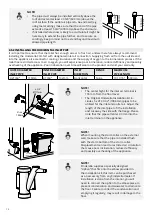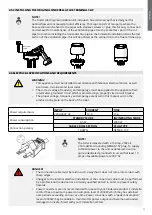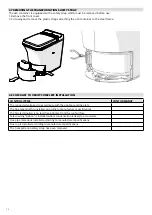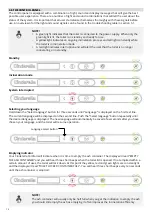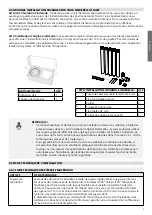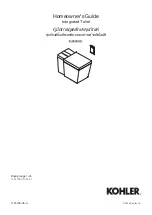
24
Hot water
4.2.6 RINSING THE CATALYTIC CONVERTER WITH HOT WATER
Recommended frequency: at least every 500 uses.
Rinsing the catalytic converter with water may be necessary in situations where steam cleaning do not remove
the particles or bad odours. This procedure requires heavy lifting and a facility where spillage of water is
acceptable. Make sure to perform steps 1.-4. in the “Cleaning the appliance flue terminal” (4.3.1) procedure and
follow the steps as follows.
1. Place the toilet where it is OK to spill water, e.g.
where there is a suitable drain, outside or in a
bath. Use the specially designed Cinderella funnel,
or a funnel that fits in the exhaust pipe. Slightly
tilt the toilet forward, and pour 2–3 L of hot water
through the exhaust pipe and catalyst. The excess
water should be clean at the end of the rinsing
process. If necessary, use more water to properly
clean the system.
2. Repeat step 1 4-5 times until the water is clean and
no crystals or other obstructions can be spotted
when inspecting the catalyst (see section 4.2.4)
3.
Reconnect the appliance to the flue pipe and
power supply.
4. Install the ash container and front cover.
5. Perform the performance test as described in
section 2.8
NOTE!
Before disconnecting the appliance and rinsing the system with hot water, inspect the
catalytic converter and perform steam cleaning in accordance with section 4.2.2. If the
catalytic converter is still clogged, or odour is still noticeable when incinerating, perform the
system rinsing in accordance with section 4.3.2.
5. TROUBLESHOOTING AND FAQ
WARNING!
Service must be performed in accordance with all state, municipal and local codes. If
you are unsure of the regulations in your area, please contact your nearest dealer or
service representative for further instructions. The power should be disconnected when
performing all servicing and maintenance on the toilet.
Online Troubleshooter Module
The sound and light signals on the toilet control panel indicates the operating status of the toilet. Downtime and
faults in the toilet will be notified with various sound and light signals as described in section 5.1 in this manual.
We have gathered the most common errors / problems in a online troubleshooter, so that you can easily get
answers to what is wrong with your toilet, and get suggestions on how you can solve the problem yourself.
CAUTION!
The front of the outer shell is thin and should therefore not carry the entire weight of the
toilet. Be gentle while tilting the appliance and make sure that the toilet is placed in such a
position that the toilet shell is safeguarded. It is advised to be two people to do this operation,
where one can hold the toilet while the other rinses the catlytic converter.

